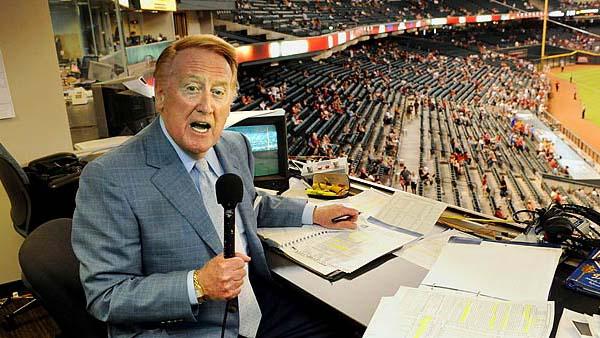 There is a reason Vin Scully is known as one of the best broadcast professionals in all of sports. Known best for his work as the play-by-play man for the Los Angeles Dodgers, Scully dabbled in a host of other sports, including golf, and he has a way with words few can match.
There is a reason Vin Scully is known as one of the best broadcast professionals in all of sports. Known best for his work as the play-by-play man for the Los Angeles Dodgers, Scully dabbled in a host of other sports, including golf, and he has a way with words few can match.As a sportscaster, Scully often must recite volumes of statistics. He also has a keen insight as to their significance, as he once said: "Statistics are used much like a drunk uses a lamppost; for support, not illumination."
The golf business too is filled with statistics on weather impact, rounds played, spending at the golf shop and in the restaurant, and equipment sales, as those who make a living studying these numbers attempt to decipher their meaning and how they are relevant to the state of the industry today and where it is headed tomorrow.
According to the National Golf Foundation's mid-year report card, rounds played in 2014 are up 2.4 percent per day open through July, compared to the same period in 2013. We're not sure how that works, since Golf Datatech, NGF's partner in delivering reports and statistics through the PGA Performance Trak package, reports that nationwide rounds played for the same period are down 1.4 percent. Nonetheless, we actually were a little optimistic about this report until we contacted Jim Koppenhaver, who told a different story.
Granted, an abnormally long and cold winter in much of the country adversely affected rounds played for the first quarter of the year. But that brutal winter and ensuing cool, wet spring eventually were followed by a mild summer that has been quite conducive to attracting golfers and growing grass.
In fact, since closing out that first quarter of the year, rounds played in the following four-month period have been as follows: down 1.5 percent, up 0.9 percent, down 2.8 percent and up 1.1 percent. When one figures that the monthly drop in play during the first quarter was 3.6 percent, 4.6 percent and 4.8 percent, again it's hard to get a grasp on that increase of 2.4 percent per day open.
NGF says its measure of golf playable days was down 4.1 percent through the first half of the year compared with the first six months of 2013. And the foundation is predicting an overall mild autumn that could allow for a late rounds played rally.
Koppenhaver, whose Pellucid Corp. has always played Bear to NGF's Bull, says the foundation isn't far off, but off nonetheless. Koppenhaver tracks golf-friendly conditions down to the hour rather than the day, and he says GPH are flat through July.
NGF and PGA Performance Trak, which utilize Weather Trends International, are predicting an extended autumn with favorable weather conditions. Koppenhaver, who uses Weather Bank Inc., disagrees.
"No major meltdown," Koppenhaver says. "But, according to our crystal ball, we've peaked in the weather comeback and will give a little bit of it back."
That's bad news at a key time of year for an industry that is in need of recovery, yet is projected to shed another 35-75 18-hole equivalents in 2014.
Regardless of what the statistics say, this much we know: no industry growth initiative is worth its salt if it doesn't work for you. It doesn't matter much to you what works for the course down the road. Recovery must happen on a site-by-site basis by implementing initiatives that improve pace of play, make the game more appealing to those who don't have 4-5 hours to spend on golf, and more friendly to those who have been scared off during the past decade.
Early reports indicated that even foot golf is resulting in increased revenues. , and the industry is facing several more years of contraction before this ship is righted, which brings to mind another Scully quote.
"You can almost taste the pressure now."

